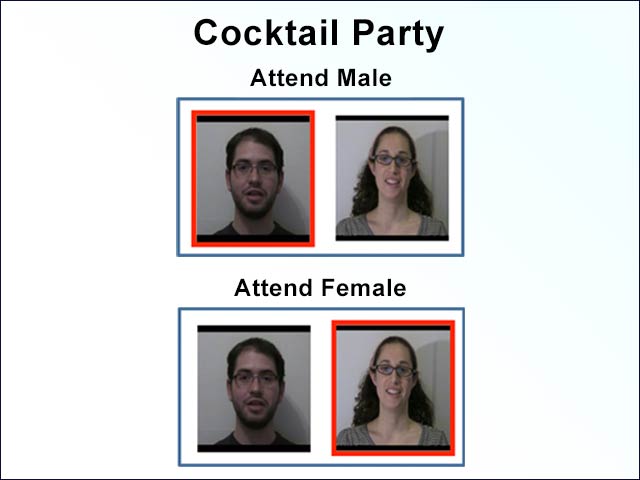By Avigayil Kadesh
“We have so much information coming into our senses all the time and we are challenged to choose what to pay attention to and what to ignore,” says Israeli cognitive neuroscientist Elana Zion Golumbic.
Golumbic recently published her findings in the journal Neuron on the so-called “cocktail party effect” that lets us zoom in on just one speaker in a room full of many speakers.
“All sounds in the environment come into your ears, so selection has to be done internally – it’s more a software than a hardware operation,” she explains.
We cannot, after all, move our ears the way we move our eyes to focus on one thing at a time. That task must be accomplished by nerve cells and not by muscle cells.
“Engineers have been trying for decades to amplify important parts and reduce background noise, and it’s quite challenging computationally. Yet human beings apparently do this well. That’s why I find it fascinating,” says Golumbic.
Working with psychiatrist Dr. Charles Schroeder of Columbia University, where she is finishing a research fellowship before returning to Israel, and with colleagues from other US universities, Golumbic was able to map the brain activity involved in the phenomenon.
The study was made possible by gaining access to six hospital patients who had electrodes placed on the surface of their brains in a diagnostic procedure for epilepsy.
With no added risk to these patients, Golumbic’s team recorded their electrical brain activity as they were shown simultaneous videos – one with a woman speaking, one with a man speaking and another with both speaking simultaneously. When asked to concentrate on the male speaker, the patients automatically focused their eyes on him, "attending" him.

Attended speech is just starting to be understood.
Image courtesy of Elana Zion Golumbic How the brain registers attended and ignored speech
A mathematical model was used to reconstruct speech patterns from the brain's electrical activity. Matching those patterns with the original patterns coming from the ignored and attended speakers provided a clear picture of what was going on: the subjects' brains had registered both attended and ignored speech, but not in the same regions of the brain.
The ignored speech registered in the part of the brain governing sound, while the attended speech registered in regions associated with higher functioning, including language. While they were paying attention to the speech, the subjects actually tuned into the selected sound pattern more and more strongly.
This study provides the first clear evidence of brain locations where there is exclusive representation of attended speech while ignored conversations get filtered out.
It was an exciting outcome for Golumbic, who was the scientific consultant for several brain-related exhibits about optical, auditory and tactile illusions at the Bloomfield Science Museum in Jerusalem.
“I started working on this in 2009 as a postdoctoral researcher,” says Golumbic, now 33. “But there was an ‘aha’ moment the first time I saw that switching attention between two speakers causes a dramatic change in the way the brain is responding, despite the fact that the sensory input to the ears was identical. To see it manifested in the brain was what we were looking for, and it was very dramatic.”
Because the ability to focus on and understand one talker in a noisy social environment is a critical social-cognitive capacity, the researchers noted in their article, the findings could have important implications for individuals with attention deficit hyperactivity disorder (ADD/ADHD) and autism, as well as for the elderly.
“I want to take this further to explore different populations,” Golumbic says. She has been studying the phenomenon in schizophrenic patients in New York, in collaboration with Dr. Dan Javitt.
“Another area of interest is what types of environments are more conducive to selective attention and which are more difficult. Perhaps we can figure out optimal settings for paying attention. These are some of the directions I’d like to take this.”